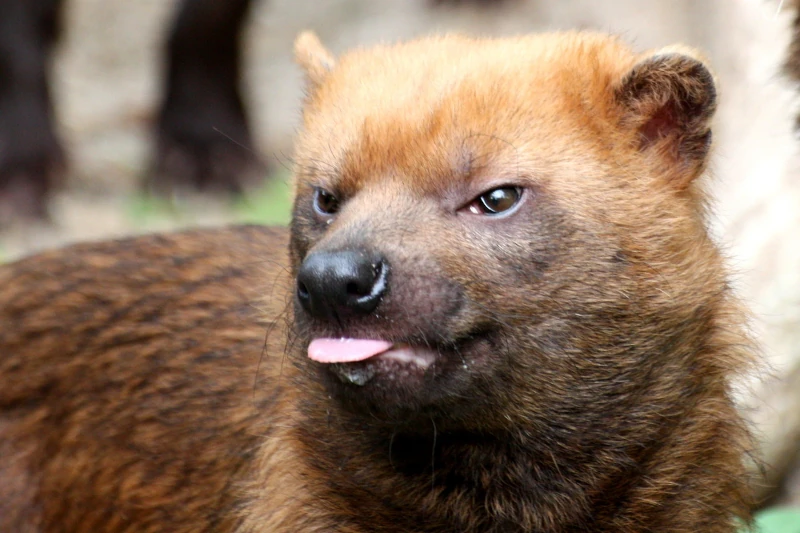
The Secretive Charm of the Bush Dog: A South American Enigma
Have you ever heard of a dog that looks a bit like an otter, lives in the rainforest, and can swim surprisingly well? Meet the bush dog (Speothos venaticus), a fascinating and somewhat elusive canid native to the humid forests and grasslands of Central and South America. Despite being a member of the dog family, its unique appearance and behavior set it apart from its more familiar cousins.
Bush dogs are relatively small, stocky animals with short legs, a short bushy tail, and rounded ears. Their sleek, brownish-red fur helps them blend seamlessly into their dense jungle environment. One of their most distinctive features is their semi-webbed feet, an adaptation that makes them excellent swimmers and allows them to navigate the flooded areas of their habitat with ease.
These social canids typically live in small packs, often consisting of a mated pair and their offspring. They are primarily diurnal, meaning they are most active during the day, hunting for prey such as pacas, agoutis, capybaras, and even the occasional rhea. Their hunting strategy often involves chasing prey into water, where their swimming prowess gives them an advantage. Bush dogs communicate with a variety of vocalizations, including high-pitched whistles, yelps, and whines, which help them coordinate their hunting efforts and maintain contact within their dense surroundings.
Unfortunately, the secretive nature of bush dogs also makes them difficult to study, and much about their ecology and social behavior remains a mystery. What we do know is that they face a number of threats, including habitat loss and fragmentation due to deforestation and agricultural expansion. They are also vulnerable to diseases transmitted by domestic dogs and are sometimes hunted as pests or out of fear.
Currently, bush dogs are listed as Near Threatened by the International Union for Conservation of Nature (IUCN). Conservation efforts are crucial to ensure the survival of these unique animals in their natural habitat. These efforts include protecting their remaining forest homes, promoting sustainable land management practices, and conducting further research to better understand their needs and behaviors.
The bush dog, with its otter-like appearance and fascinating adaptations to its rainforest environment, serves as a reminder of the incredible biodiversity that still exists in the world’s wild places. By learning more about these elusive creatures and supporting conservation initiatives, we can help ensure that future generations will also have the chance to marvel at the secretive charm of the bush dog.
Have you ever encountered a less well-known animal that captured your imagination?
More photos below ↓








Disclaimer: This blog post is for edutainment purposes only and may not be entirely accurate.






